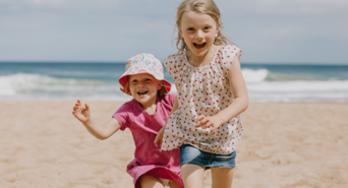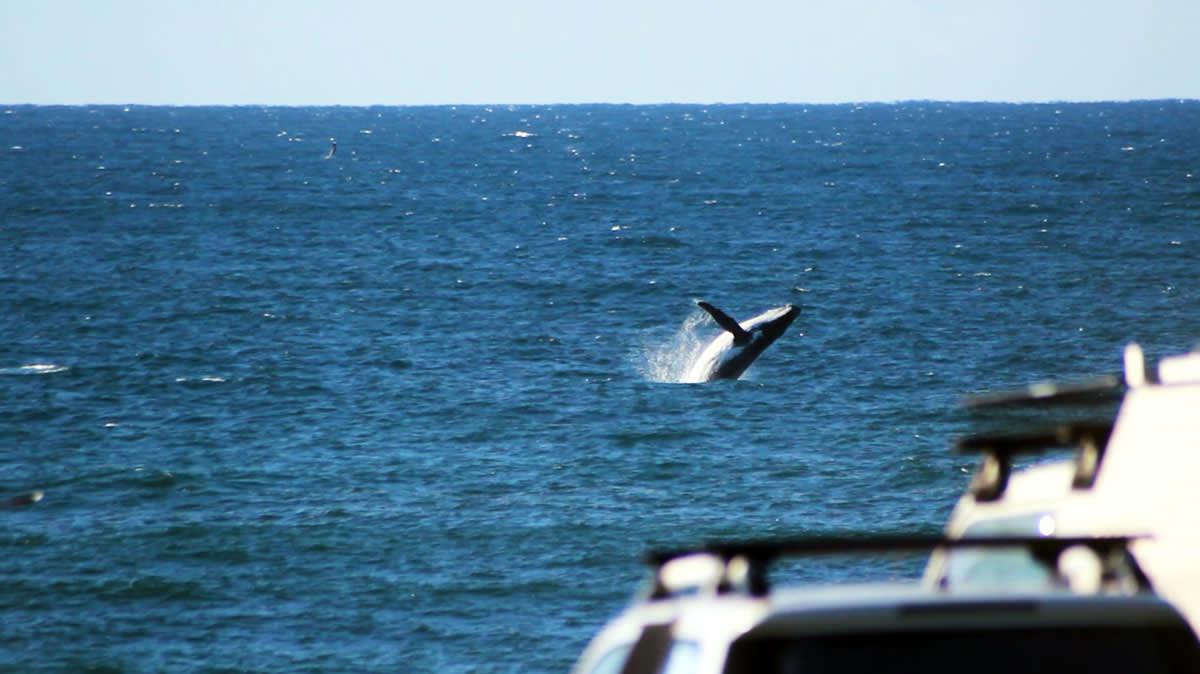


Join thousands of fellow campervan travellers
Sign up for our Britz newsletter to receive inspirational travel content and awesome deals, and we'll send you a copy of our Ultimate RV guide!
Thanks
Please confirm subscription in your email.

There are many exciting things in the ocean. Australia is after all one of the hot spots for marine life spotting, fringed by the largest living thing on earth – the Great Barrier Reef. A favourite Aussie pastime means that barra, salmon and lobster grace our dinner tables on a regular basis, and those prawns at Christmas? Fantastic.
While you’ll be able to spot dolphins regularly giving surfers a run for their money, there is one creature that is relatively elusive for most of the year. Between June and October though, you have a chance. Despite its huge size of over 15 meters, weight of up to 50 tones, and 26,000 of them bobbing around in the waters off Australia’s East Coast, the most flamboyant of the native species, the humpback whale, are hard to get a good look at. We have a surprise for you: on our last trip to the Queensland and New South Wales coastline, we found the best time to spot whales was early in the morning, and therefore the best place was from between the sheets.
Hotels are great. You get little soap bars on your pillows, you have cable TV and a lovely view over the gardens. If you’re lucky, even over the beach. But you can’t take your bed out to one of the best vantage points for marine life spotting at sunrise. We love being close to the sea, so when we researched our trip we found the headland at Hastings Point on Google Earth, and it turned out to be exactly what we were looking for. A small car park with 360-degree, uninterrupted views up and down the coast allowed us to pull up in our campervan, open the back and stick the kettle on for an early morning tea, all whilst watching out for telltale signs of cetacean activity. If you’re in NSW, Byron Bay’s lighthouse is only vehicle accessible for a small fee from 8am, but a short walk from a lower car park lets you enjoy sunrise with the locals and a close-up view of its iconic lighthouse surrounded by deep blue ocean. Even further down the coast the Pat Morton lookout at Lennox Head is the perfect place to pull out some chairs and tables for a morning feast, and Woolgoolga’s headland has fantastic views and a whale mural to boot.
Early mornings seemed to be ideal, for several reasons. First of all, the best way to spot a whale is to look for it breathing out. The early morning sun will light up the big spout of air and tiny water droplets, making them easy to spot even far out towards the horizon. Seas tend to be calmer and not whipped up by wind, meaning there aren’t as many white capped waves to mistake for whale breath. Secondly, the whales we spotted seemed to be so stoked that the sun was rising that they became especially active when the first rays of the day danced on the water's surface.
Giant explosions erupted out at sea, huge splashes and parts of the ocean frothed up as several humpbacks at once slapped their tails playfully on the surface, waved with their pectoral fins or even jumped clean out of the ocean, causing more that just a few of us spectators to gasp loudly in awe. After watching for a while, some seemed to have a bit of a pattern, and one in particular made its 8km/h journey more exciting by slapping a pec fin twice, breathing out heavily once, diving and breaching spectacularly, then repeating the sequence again and again.
Sipping a hot cup of tea, snuggled up in a doona on pole position for wild, breaching whales – talk about room with a view. If you’re heading up the East Coast this whale season, check out our favourite spots and let us know if you have any new discoveries. And above all, get inspired by how incredible this part of the ocean is around this huge island we call home. We’re one lucky bunch of humans.
